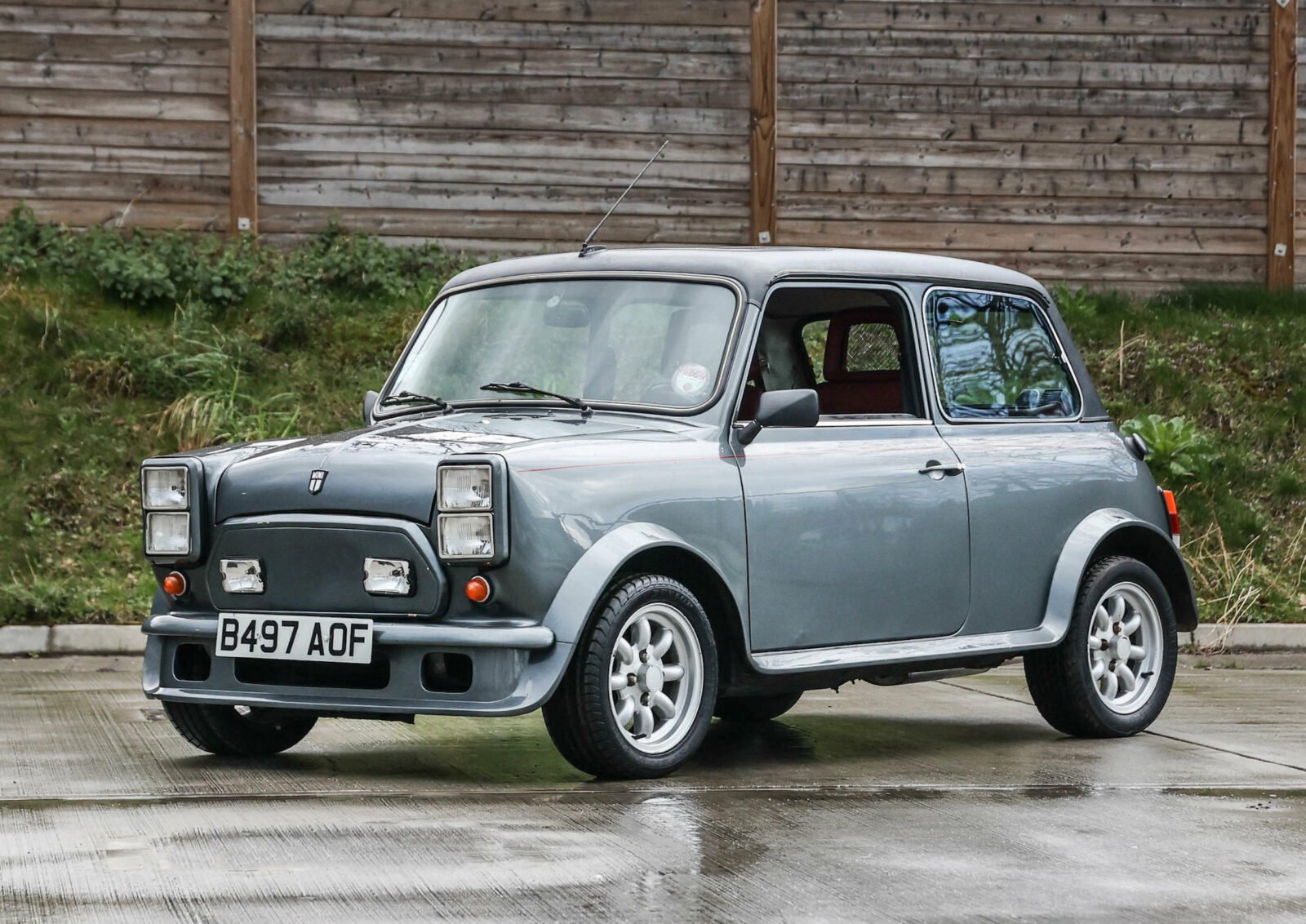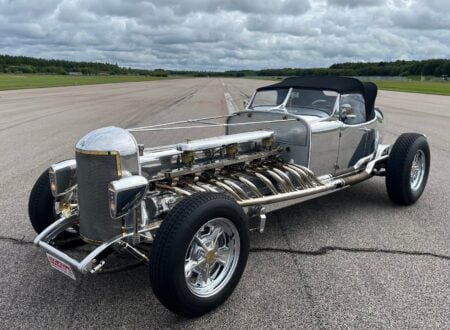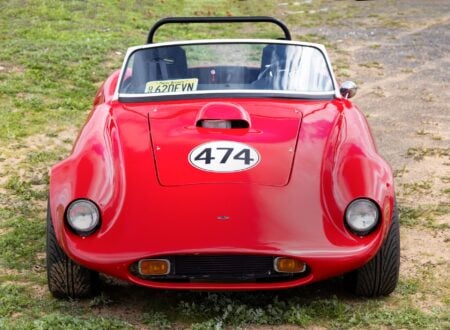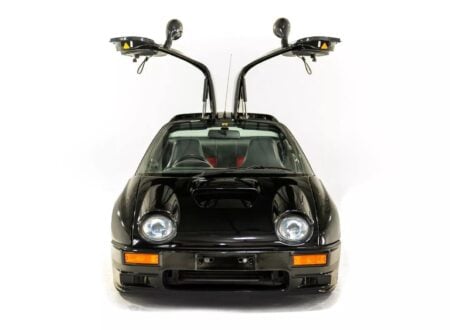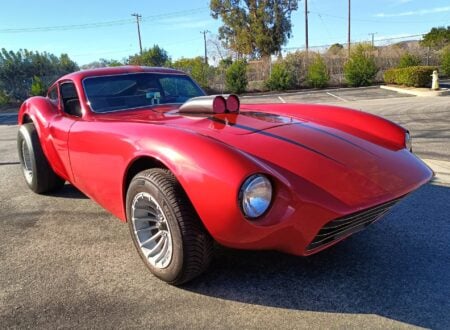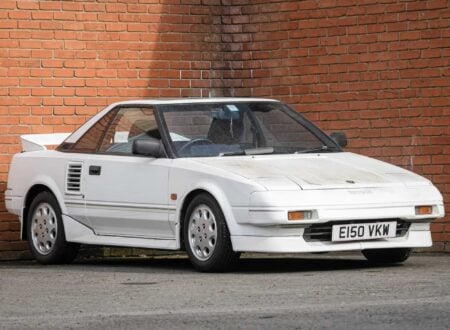This is a 1984 Mini 1000 HLE with a fascinating history, it was custom built by the Aston Martin coachbuilder Tickford at the request of a Saudi Arabian Prince who planned to use it as one of his cars in Europe.
Adjusted for inflation the cost to customize this Mini was approximately £150,780 ($188,728 USD), or £50,000 in 1984, likely making it one of the most valuable Minis in the world when it was new.
Fast Facts – The Tickford Mini
- Tickford was founded as Salmons & Sons in the 1820s, originally building horse drawn carriages before shifting into the new world of automotive coachbuilding around the turn of the 20th century.
- In 1955 David Brown, the owner of Aston Martin, bought Tickford and used the company to manufacture some Aston models for the next 30+ years.
- In 1981 an automotive engineering firm named Aston Martin Tickford was formed, it provided engineering work for many major manufacturers and developed the turbocharged Tickford Capri, the MG Maestro Turbo, and the Ford Sierra Cosworth RS500.
- In 1984 Tickford developed the car you see here for a Saudi Arabian Prince. It features a completely revised front end and a luxurious interior trimmed with red Aston Martin leather, a walnut dashboard, and an advanced Clarion sound system.
The Mighty Mini
The Mini’s story begins in the aftermath of the 1956 Suez Crisis, which led to fuel rationing in the United Kingdom. Recognizing the need for a fuel-efficient and economical car, the British Motor Corporation (BMC) commissioned designer Sir Alec Issigonis to create a small, affordable vehicle. Issigonis, an innovative and forward-thinking designer, rose to the challenge and delivered a groundbreaking new concept.
Above Video: This is the full documentary “Wizardry On Wheels” from 1961 that tells the story of the Mini. It provides an excellent window back into the development of the car and it’s just under 30 minutes in length.
The first Mini, known as the Mark I, was released in August 1959 under two brand names: the Austin Seven and the Morris Mini-Minor. The car’s unique design featured a transverse, front-mounted engine built in unit with the transmission, front-wheel drive, and 10-inch wheels, allowing for a surprisingly spacious interior despite its diminutive size.
The Mini quickly gained popularity for its low cost and fuel efficiency, as well as the fact that the car was just plain fun to drive – the handling often being favorably compared with a go kart.
The Mini In Motorsport
In 1961, race car designer and builder John Cooper recognized the Mini’s potential for motorsports. He collaborated with Issigonis to develop the Mini Cooper, a high-performance version of the original Mini. The Mini Cooper featured a more powerful engine, improved brakes, and a slew of other changes transforming the humble economy car into a formidable competitor.
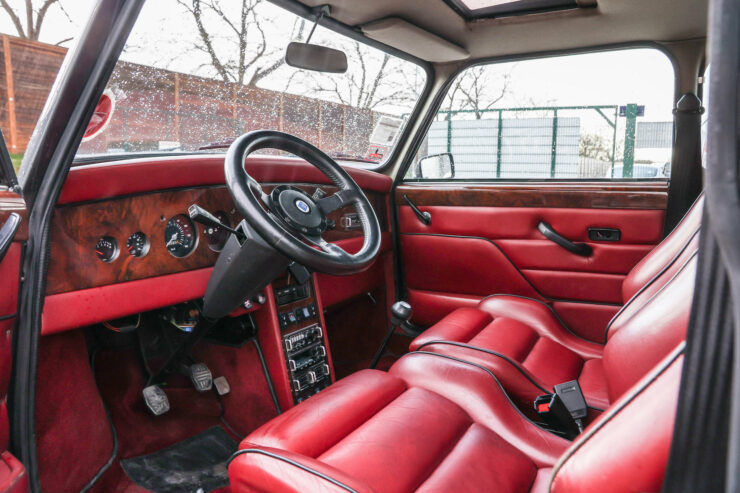

The Mini Cooper dominated the racing scene in the 1960s, winning numerous events, including the prestigious Monte Carlo Rally in 1964, 1965, and 1967. It also won the 1000 Lakes Rally in 1965, 1966, and 1967, and it utterly dominated the 1966 Gallaher 500 at Bathurst, Australia taking all of the first nine places.
As if this wasn’t enough the pint-sized Mini also won the British Saloon Car Championship in 1961, 1962, 1969, 1978 and 1979, the British Rally Championship in 1962, 1963, and 1970, the European Rally Championship in 1965 and 1966, and the Finnish Rally Championship in 1965 and 1966.
These racing successes catapulted the Mini to international fame and cemented its status as a symbol of 1960s British motor racing. It was a true David and Goliath car, and the Mini remains a fierce competitor today in the world of vintage motorsport.
The Mini’s charm and widespread appeal transcended the automotive world, making it a cultural icon. The car became synonymous with the 1960s British cultural revolution, celebrities like Paul McCartney, Steve McQueen, and Peter Sellers were proud Mini owners, further solidifying the car’s reputation as a vehicle that transcended all levels of society.
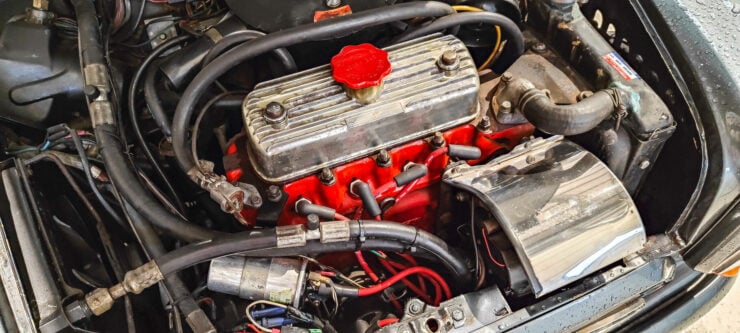

The classic Mini also made its mark on the silver screen, featuring in movies such as “The Italian Job” (1969) and “The Bourne Identity” (2002). Its distinctive look and charm made the Mini a beloved character in its own right, and the classic Mini remains a favorite vintage car for many.
The 1984 Mini 1000 HLE Tickford Shown Here
The car you see here is the only one of its kind in the world. It’s a one-off build that cost £50,000 in 1984 currency, or approximately £150,780 today after inflation is priced in. And that price didn’t include the cost of the car itself, just the customization work done by Tickford.
Their project was the brainchild of a Saudi Arabian Prince, though his name isn’t mentioned, and the car was never intended to be sent to the Middle East, rather it would be used as the ideal city transportation vehicle in Europe, where streets and alleyways can be far too small for most regular sized cars.
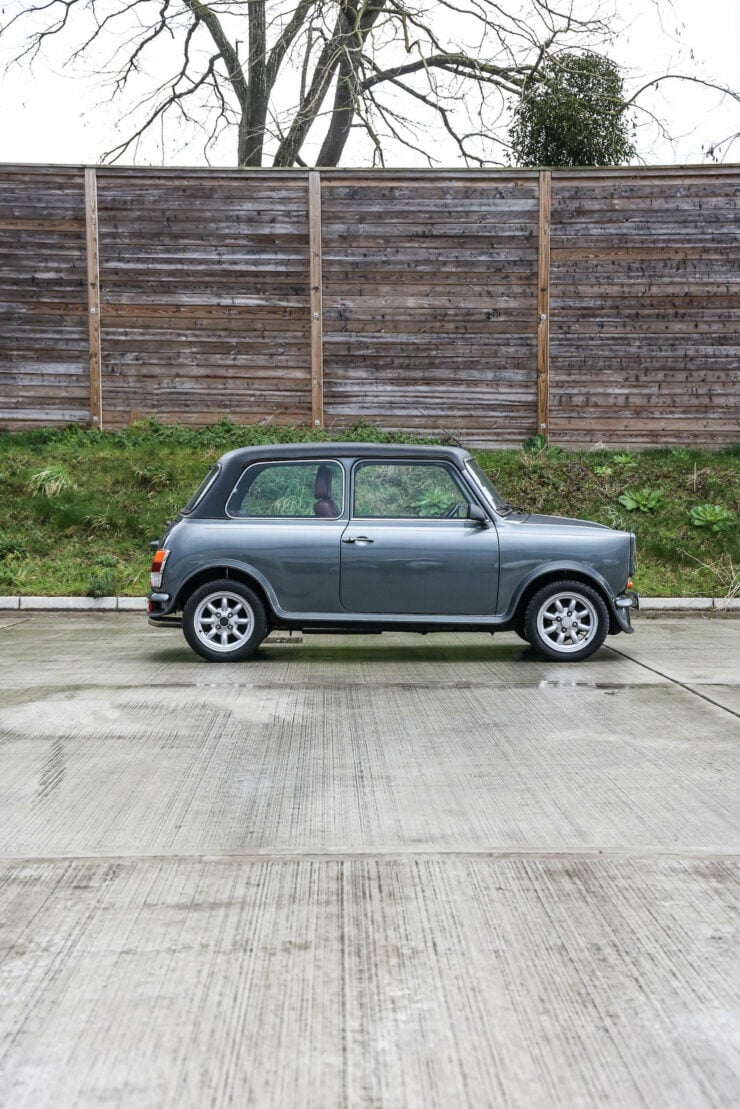

The build process included the front of the car being completely remodeled with vertical rectangular headlights, there grille was deleted, and a front lip spoiler was added along with matching wheel arch extensions.
A set of Minilite wheels were added and the outside of the car was finished off with a tasteful silver paint job with red pinstriping and a roof covered on black vinyl (as was the fashion at the time).
Inside the car is where Tickford really went to work, there are Recaro seats trimmed in rich red Aston Martin leather and an Aston Martin burr walnut dashboard, plush carpeting, and a Clarion sound system that’s more comprehensive than many home hifi systems. The red leather treatment was also applied to the doors, dashboard surround, center console, and rear seats.
Since it was delivered in 1984 the car has accumulated just 13,065 kms or approximately 8,111 miles. It’s now due to roll across the auction block with Bonhams at the Goodwood Members’ Meeting on the 16th of April with a price guide of £60,000 – £80,000 (approximately $82,200 – $109,600 USD) and you can visit the listing here if you’d like to read more about it or register to bid.
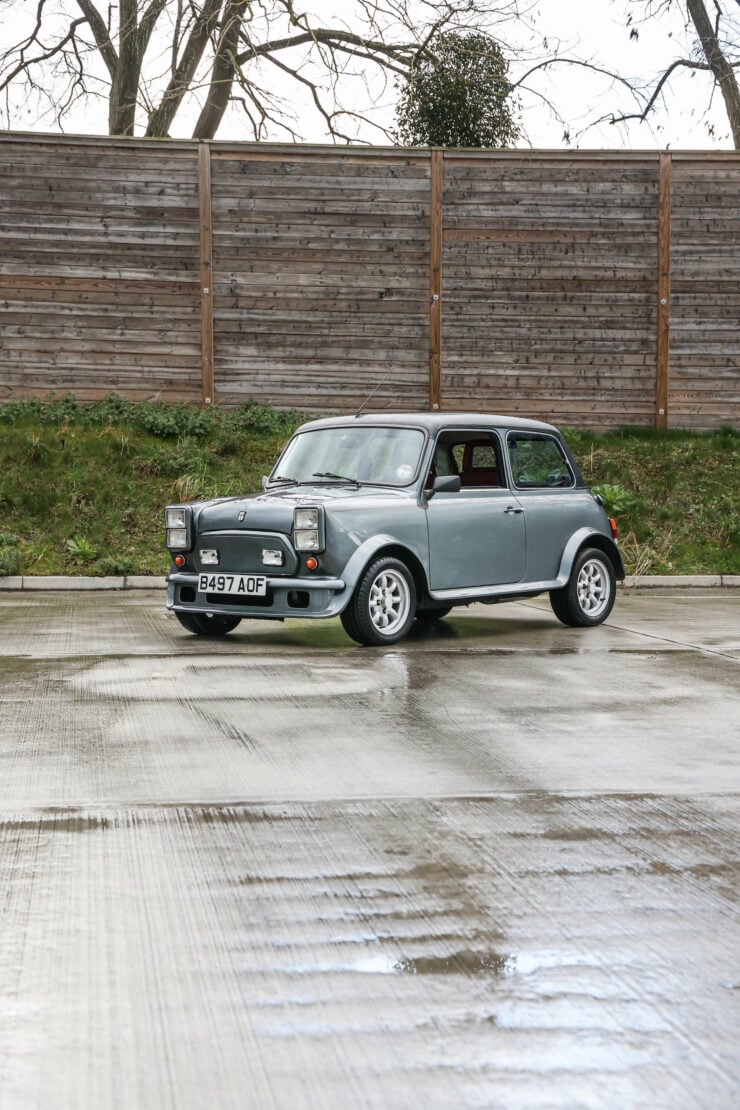
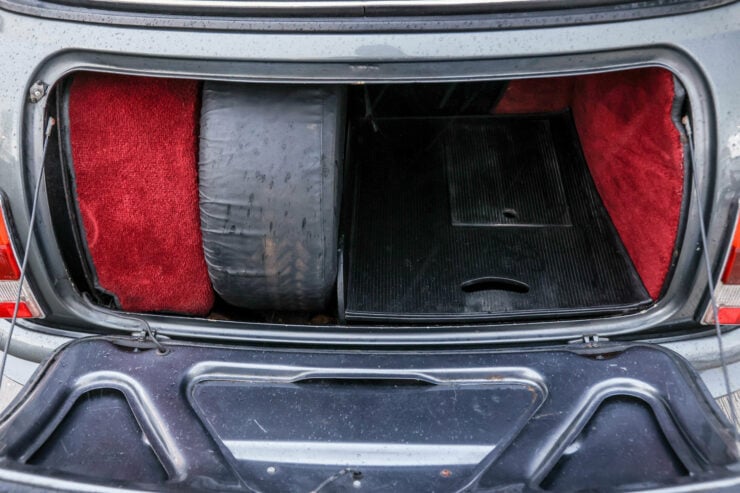
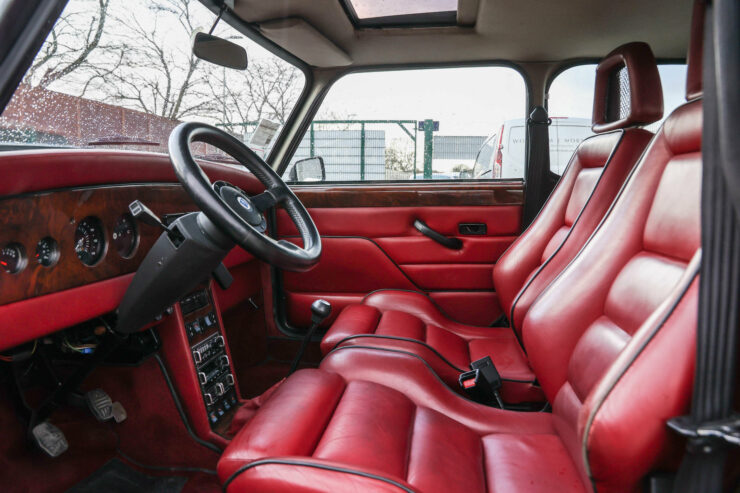
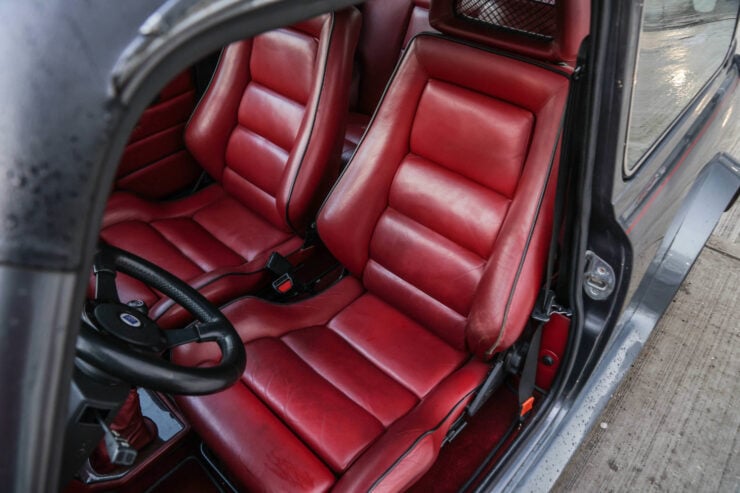
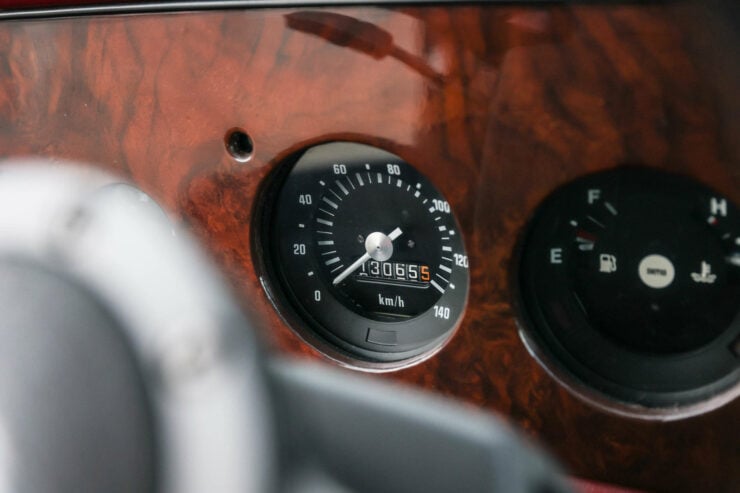
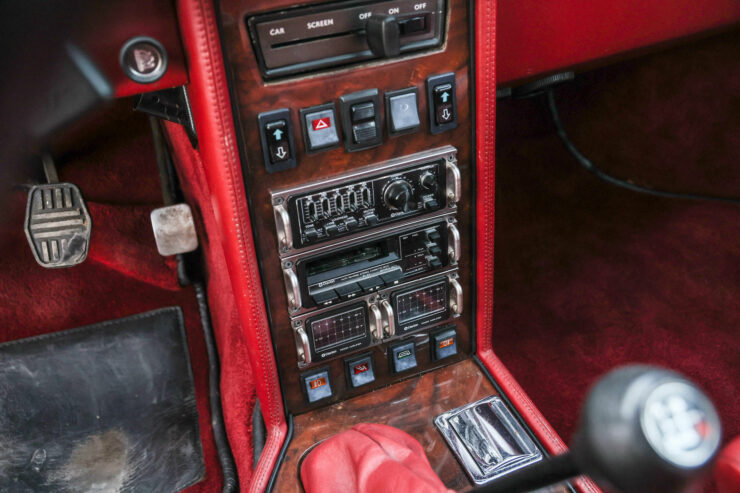
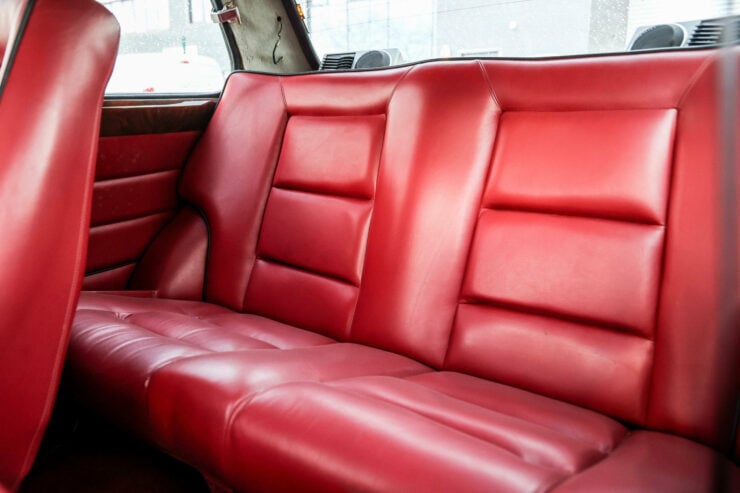
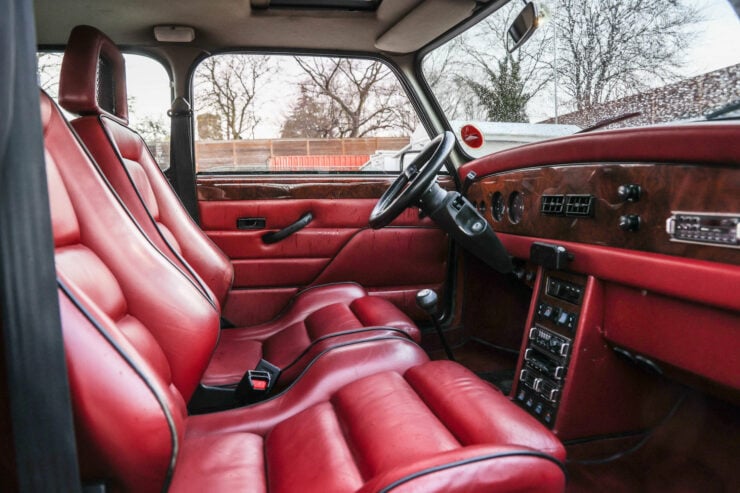
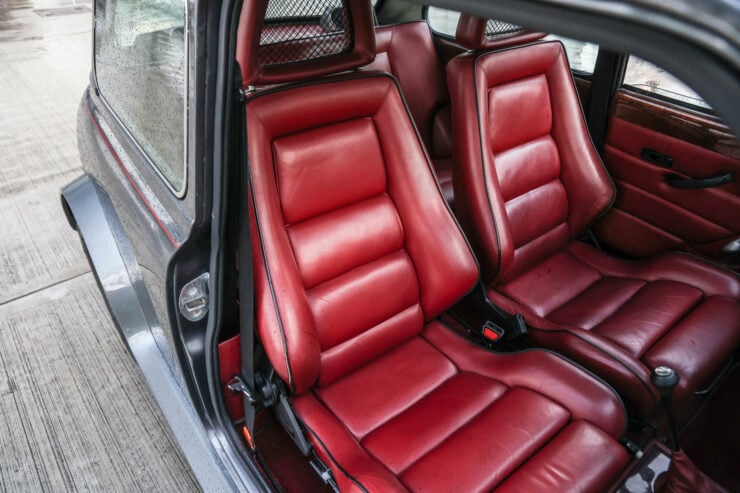
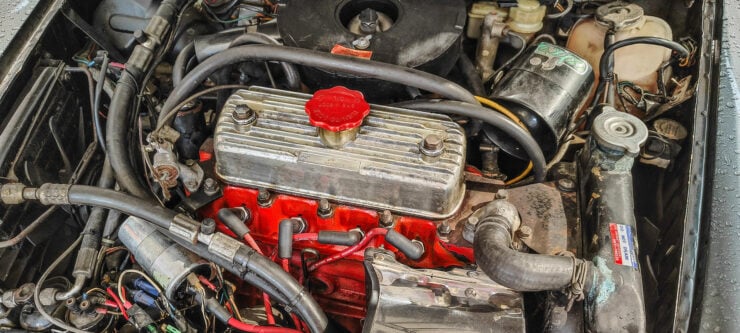
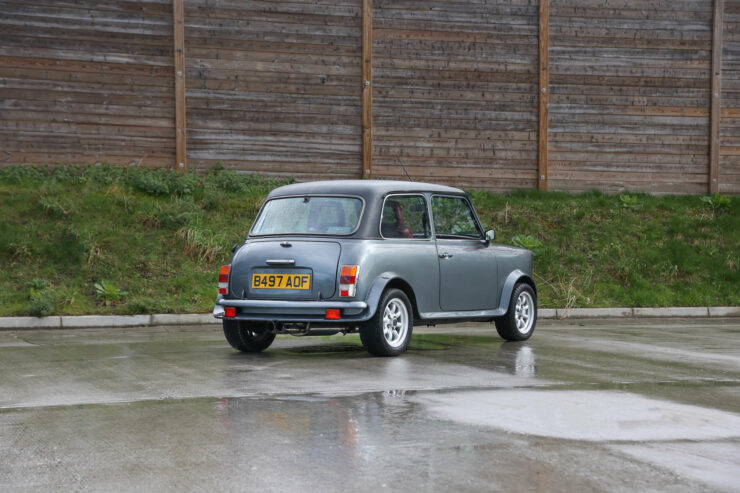
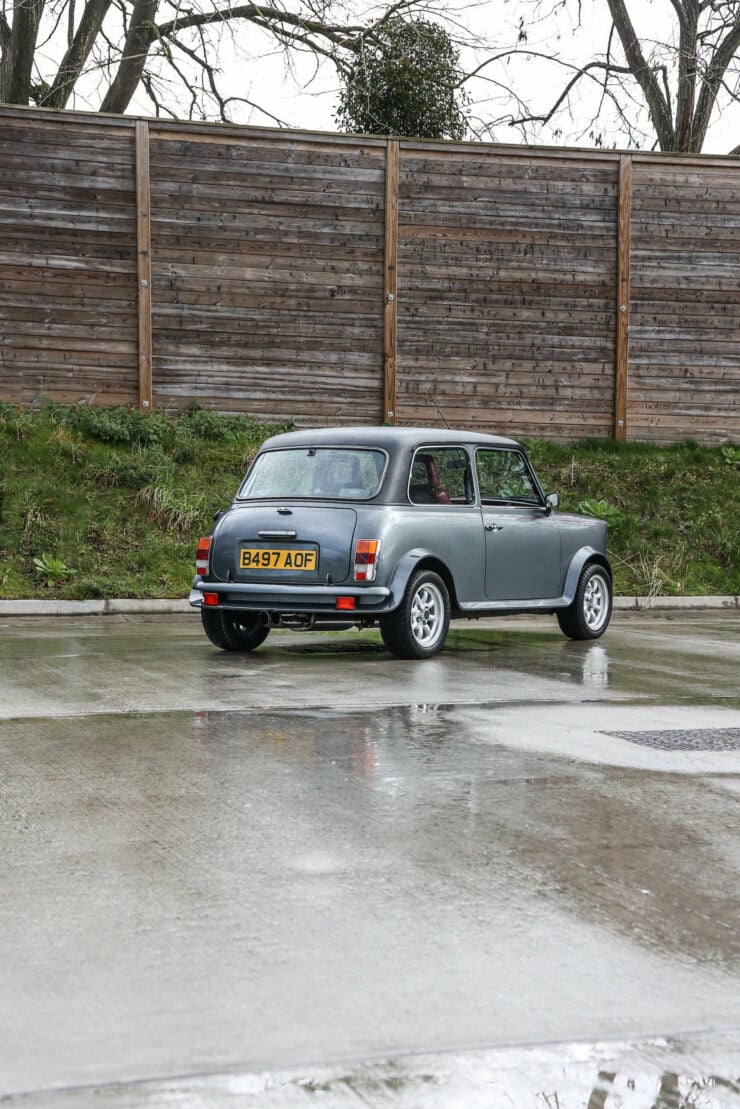
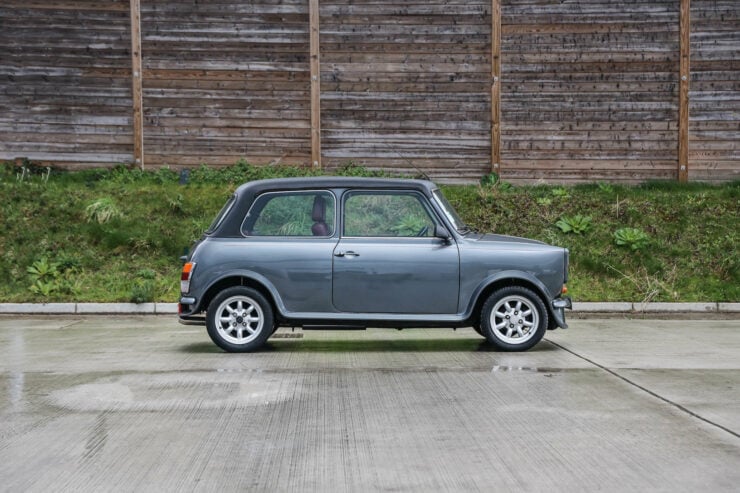
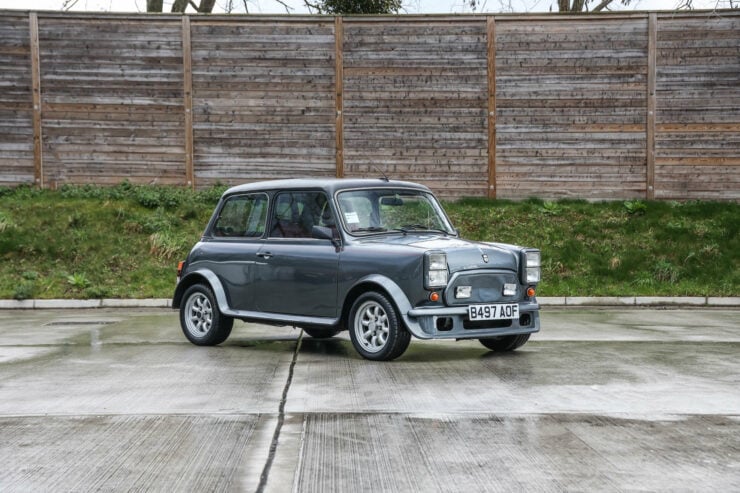
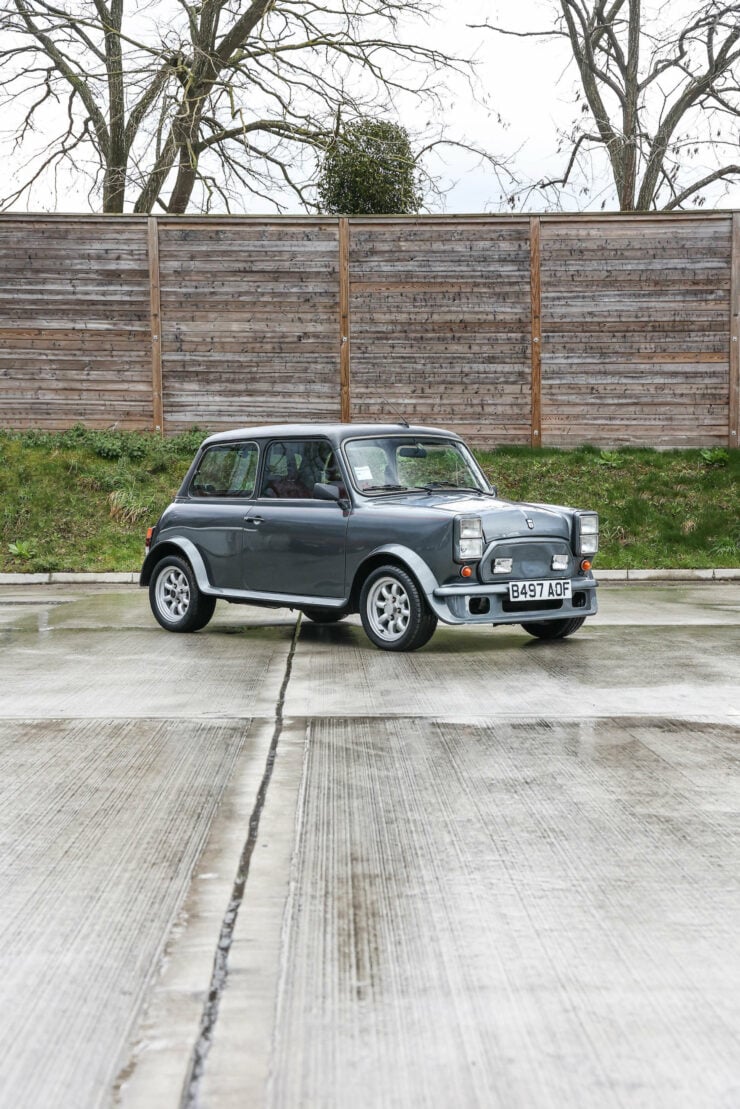
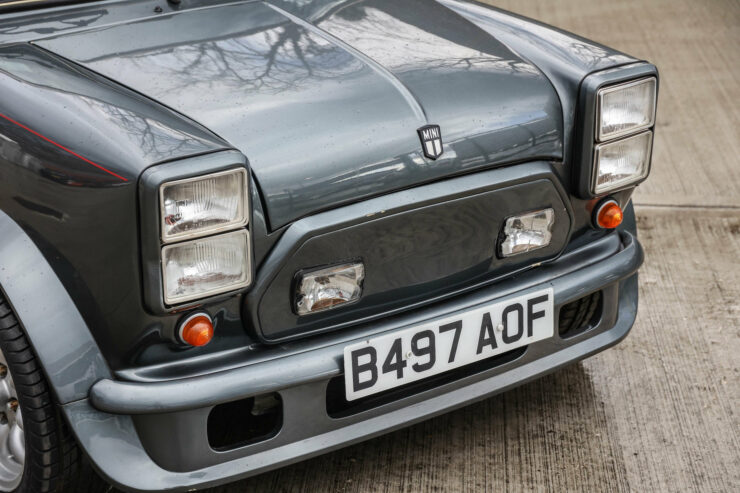
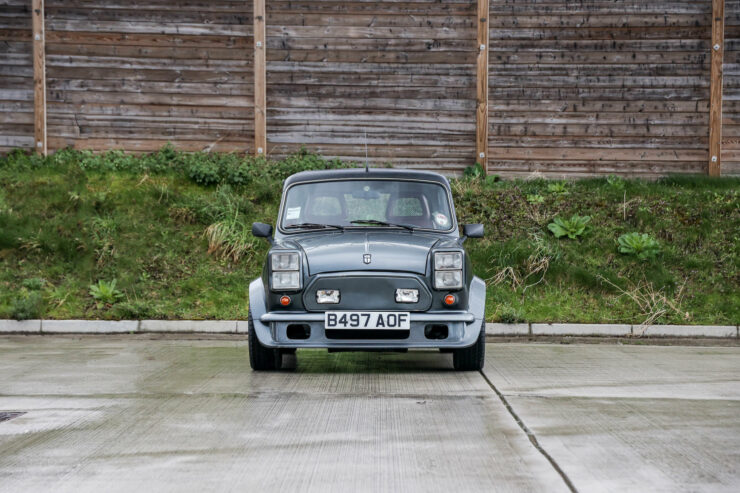
Images courtesy of Bonhams

